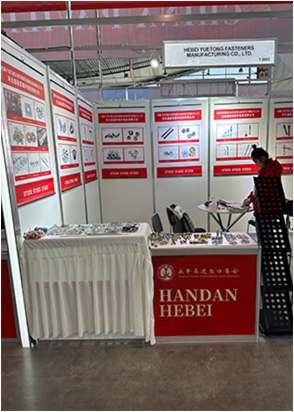Oct . 12, 2024 23:07 Back to list
Innovative J-Hook Screws for Secure and Efficient Fastening Solutions
Understanding J-Hook Screws An Essential Component in Modern Construction
In the realm of modern construction and manufacturing, various hardware components play a pivotal role in ensuring structural integrity and functionality. Among these components, the J-hook screw has emerged as a vital fastener, particularly in applications involving electrical installations, plumbing, and general construction. This article delves into the characteristics, applications, and advantages of J-hook screws, showcasing their significance in today’s construction practices.
What is a J-Hook Screw?
A J-hook screw is a type of fastener designed with a unique hook shape that resembles the letter J. This distinctive design allows for versatile attachment solutions, making it an essential component for various applications. Typically crafted from durable materials such as stainless steel or galvanized steel, J-hook screws are engineered to withstand various environmental conditions, ensuring longevity and resilience.
Features and Specifications
J-hook screws come in various sizes and lengths, catering to different project needs. The hook itself facilitates attachment to various surfaces, allowing for secure fastening while providing ample support for attached items. This feature is particularly beneficial in electrical installations where conduits and wiring need to be securely held in place yet remain accessible for future adjustments or maintenance.
Moreover, the J-hook design allows for ease of installation. Most J-hook screws can be easily driven into substrates with standard tools, providing contractors with a speedy fastening solution. The threads on the screw enhance grip, reducing the risk of loosening and ensuring that installed items remain secure over time.
Applications of J-Hook Screws
The versatility of J-hook screws enables them to be used in a variety of applications across different industries
j hook screw

1. Electrical Installations J-hook screws are commonly employed in the installation of electrical conduits. The hooks allow for the secure suspension of conduits from ceilings or walls, ensuring that they remain organized and out of the way.
2. Plumbing In plumbing applications, J-hooks are used to support and secure pipes. Their ability to hold pipes at a specific angle makes them ideal for ensuring proper drainage and preventing unnecessary strain on the plumbing system.
3. HVAC Systems J-hook screws are also used to support ductwork in heating, ventilation, and air conditioning systems. By providing reliable support for ducts, they help maintain airflow efficiency and system functionality.
4. General Construction Beyond specific applications, J-hook screws serve as versatile fasteners in various general construction tasks, from securing wall panels to supporting structural elements.
Advantages of Using J-Hook Screws
One of the major benefits of J-hook screws is their ease of installation. Contractors can save time and labor with this fastener, which is crucial in maintaining project timelines. Additionally, the durability of J-hook screws ensures that they can withstand outdoor exposure and other challenging conditions, reducing the need for frequent replacements.
Furthermore, the design of J-hook screws promotes organized installations. By allowing items to be hung or supported without clutter, they contribute to the overall aesthetic and functionality of spaces, whether in residential or commercial buildings.
Conclusion
In conclusion, J-hook screws play an indispensable role in modern construction and various industrial applications. Their unique design, durability, and ease of installation make them a preferred choice among contractors and builders. As construction techniques continue to evolve, the importance of effective fasteners like J-hook screws will only increase, underscoring the need for quality components in achieving structural integrity and efficiency. Whether in electrical wiring, plumbing, or HVAC systems, J-hook screws are here to stay, driving the future of construction forward.


